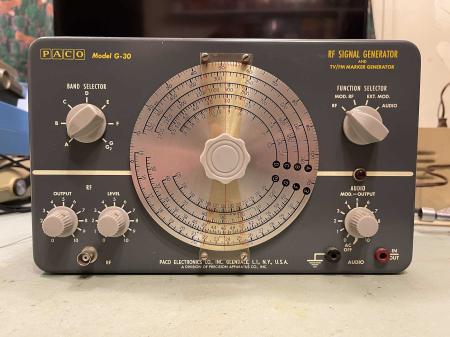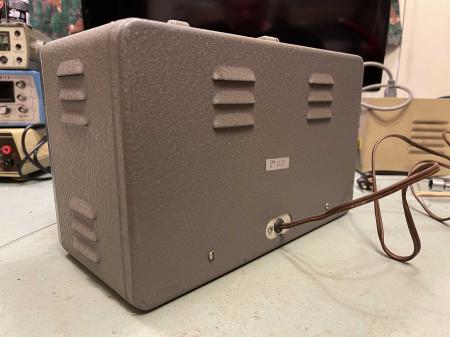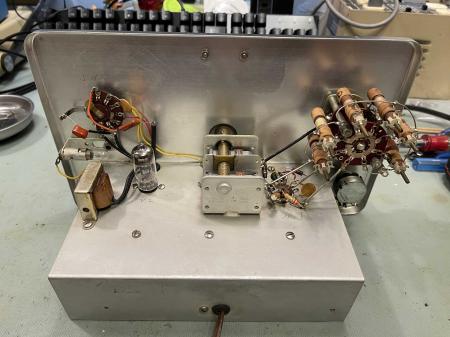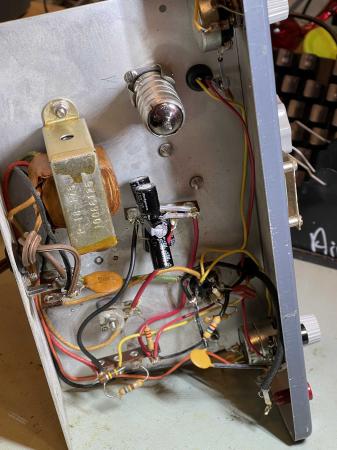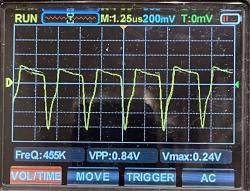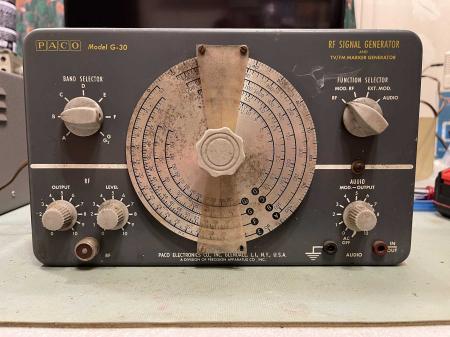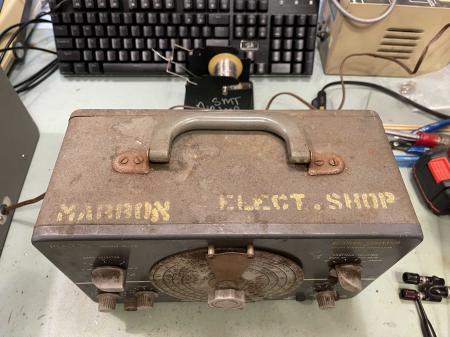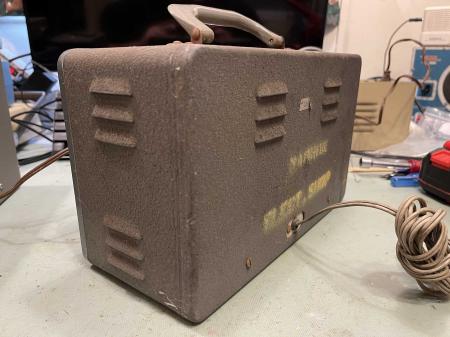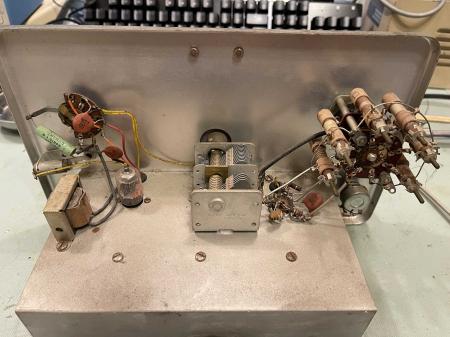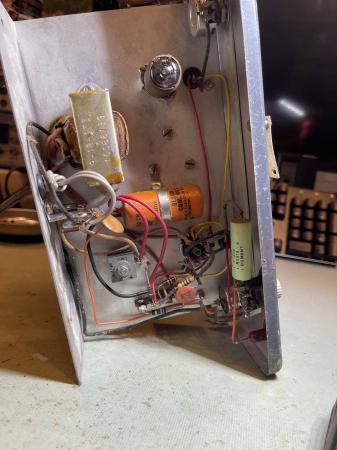- 2025
- Mar
- 28
A PACO G-30 RF Signal Generator - Part 2: Revisiting
Late last year, this PACO G-30 RF signal generator landed on my bench. You can read that original article here: https://wereboar.com … rf-signal-generator/. Since I’m waiting for parts for the Heathkit AF-1, I decided to take a fresh look at this guy and get it ready since it’s next up on the plate.
This was a purchase from the 2018 2022 Cuyahoga Falls hamfest, and I purchased a number of devices from this vendor. He said he had been using the device up to the time of sale, but needed to clear out some space. Seeing as how it was in really great shape, I bought it and some other devices he had for sale. He has also indicated that it had some work done to keep it running, but not much.
Physically, this unit resembles all other PACO devices, and is in pretty good shape for the age. I’d rate this a solid 8/10.
It goes to a decently high frequency range, although the output at those higher bands is probably not of much use. We’re more interested in the lower stuff, primarily the AM band - even though this says it’s a sweep and marker generator as well. Sure thing.
Inside, it’s pretty clean, and relatively sparse. This uses two tubes, a 6AU6 as the RF oscillator, and a 6C4 for the internal audio modulator. Power is provided by a solid-state rectifier, and everything else is passives.
Looking at this unit, you’d think that some of the components had been replaced - and some have. There are a couple of modern film capacitors in there, and a modern…stack? of electrolytics. Everything else is original, including the ceramic disc capacitors and the suspiciously modern looking resistors. There are carbon comps in there, however, so they’ll probably need to go. I’m not sure what the other style of part is.
So what needs to go here? Well, that electrolytic stack is ugly. While it works, I’d rather replace it with single units of the proper values. That’s easy enough. The selenium has to go, as does the three-leg safety capacitor. Why that thing hasn’t split and burnt is beyond me. That’s literally all we’d need to keep it going, and someone has already determined that the resistor in the power supply after the rectifier probably should be ~3.3kΩ. So, the following parts are needed:
1x 1N4007
1x 3.3kΩ 2W
2x safety capacitors
A note on Selenium rectifiers: I've seen varying things about these little devices. Some will say they're probably never going to go bad on you, and the big ones are your worry. Others state that you should replace them regardless. Some are hysterical in their need to change them out. I'm going to change it as a matter of course, because I can and someone else has already done the legwork. With these, it's not a matter of if, but when it goes bad. Silicon works much better, just remember that you need to account for voltage drop and loads. Replace the device with a modern diode.
While I’ll probably replace all the resistors eventually, the short parts list is all we need for now.
What’s the output of this device look like? Well…it’s not great.
Yeah. That sucks. And that’s 100% correct for this device. Why? This uses harmonics to generate it’s signals, and that’s what you get. It’s fine for an older device like an AA5 radio, but if you’re going to be doing modern work you’ll want to not use this. This is probably going to be more a labor of love than a useful, everyday device.
I have a second unit of this type, which was purchased at the Columbus Hamfest in 2024 for a buck. This unit is a parts donor (should any be needed) and is in pretty bad shape overall. You can tell it’s been used. A lot. It’s dirty, the front dial is gritty and bent, and it has the former owner’s markings on it. (That’s kind of cool, wish it was in better shape! Depending on how the dirt cleans up, this may go on the working model.)
But, you can also clearly see that most of the parts in the good unit are of the correct vintage.
Those green paper caps are all Dumont branded. That’s also kind of cool.
Once I take inventory of everything I’ll need - and possibly obtain a manual as the one online is of miserable quality and must have been scanned with a 100dpi potato - I’ll get started on this one. I don’t expect it to take long, stay tuned!
Next part of this series: https://wereboar.com … erator-part-3-parts/
Previous part of this series: https://wereboar.com … rf-signal-generator/
